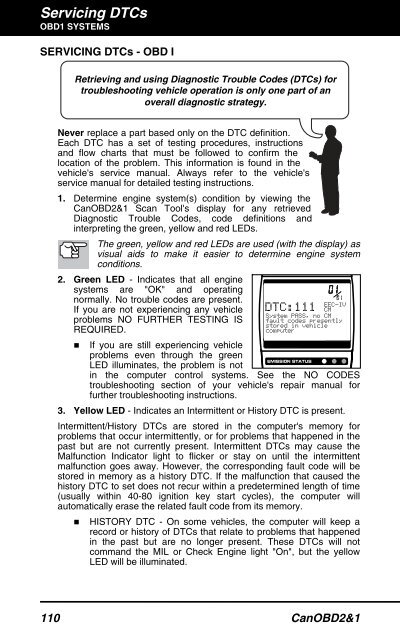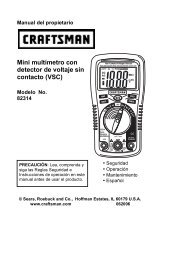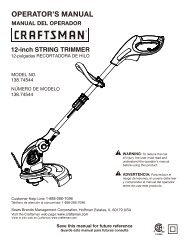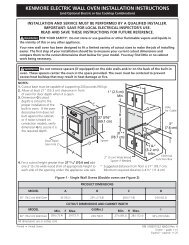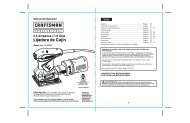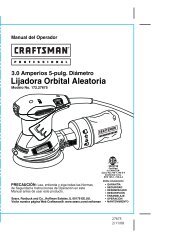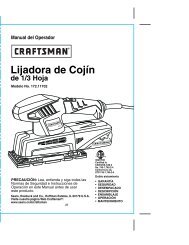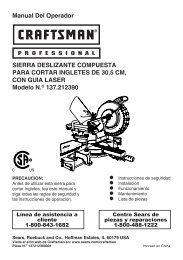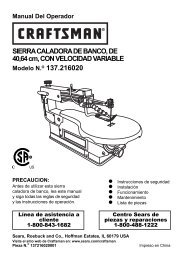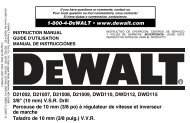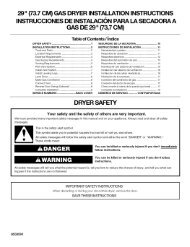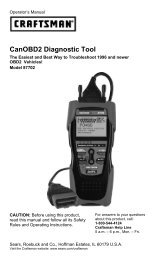You also want an ePaper? Increase the reach of your titles
YUMPU automatically turns print PDFs into web optimized ePapers that Google loves.
Servicing DTCs<br />
OBD1 SYSTEMS<br />
SERVICING DTCs - OBD I<br />
Retrieving and using Diagnostic Trouble Codes (DTCs) for<br />
troubleshooting vehicle operation is only one part of an<br />
overall diagnostic strategy.<br />
Never replace a part based only on the DTC definition.<br />
Each DTC has a set of testing procedures, instructions<br />
and flow charts that must be followed to confirm the<br />
location of the problem. This information is found in the<br />
vehicle's service manual. Always refer to the vehicle's<br />
service manual for detailed testing instructions.<br />
1. Determine engine system(s) condition by viewing the<br />
CanOBD2&1 <strong>Scan</strong> <strong>Tool</strong>'s display for any retrieved<br />
Diagnostic Trouble Codes, code definitions and<br />
interpreting the green, yellow and red LEDs.<br />
The green, yellow and red LEDs are used (with the display) as<br />
visual aids to make it easier to determine engine system<br />
conditions.<br />
2. Green LED - Indicates that all engine<br />
systems are "OK" and operating<br />
normally. No trouble codes are present.<br />
If you are not experiencing any vehicle<br />
problems NO FURTHER TESTING IS<br />
REQUIRED.<br />
� If you are still experiencing vehicle<br />
problems even through the green<br />
LED illuminates, the problem is not<br />
in the computer control systems. See the NO CODES<br />
troubleshooting section of your vehicle's repair manual for<br />
further troubleshooting instructions.<br />
3. Yellow LED - Indicates an Intermittent or History DTC is present.<br />
Intermittent/History DTCs are stored in the computer's memory for<br />
problems that occur intermittently, or for problems that happened in the<br />
past but are not currently present. Intermittent DTCs may cause the<br />
Malfunction Indicator light to flicker or stay on until the intermittent<br />
malfunction goes away. However, the corresponding fault code will be<br />
stored in memory as a history DTC. If the malfunction that caused the<br />
history DTC to set does not recur within a predetermined length of time<br />
(usually within 40-80 ignition key start cycles), the computer will<br />
automatically erase the related fault code from its memory.<br />
� HISTORY DTC - On some vehicles, the computer will keep a<br />
record or history of DTCs that relate to problems that happened<br />
in the past but are no longer present. These DTCs will not<br />
command the MIL or Check Engine light "On", but the yellow<br />
LED will be illuminated.<br />
110 CanOBD2&1


